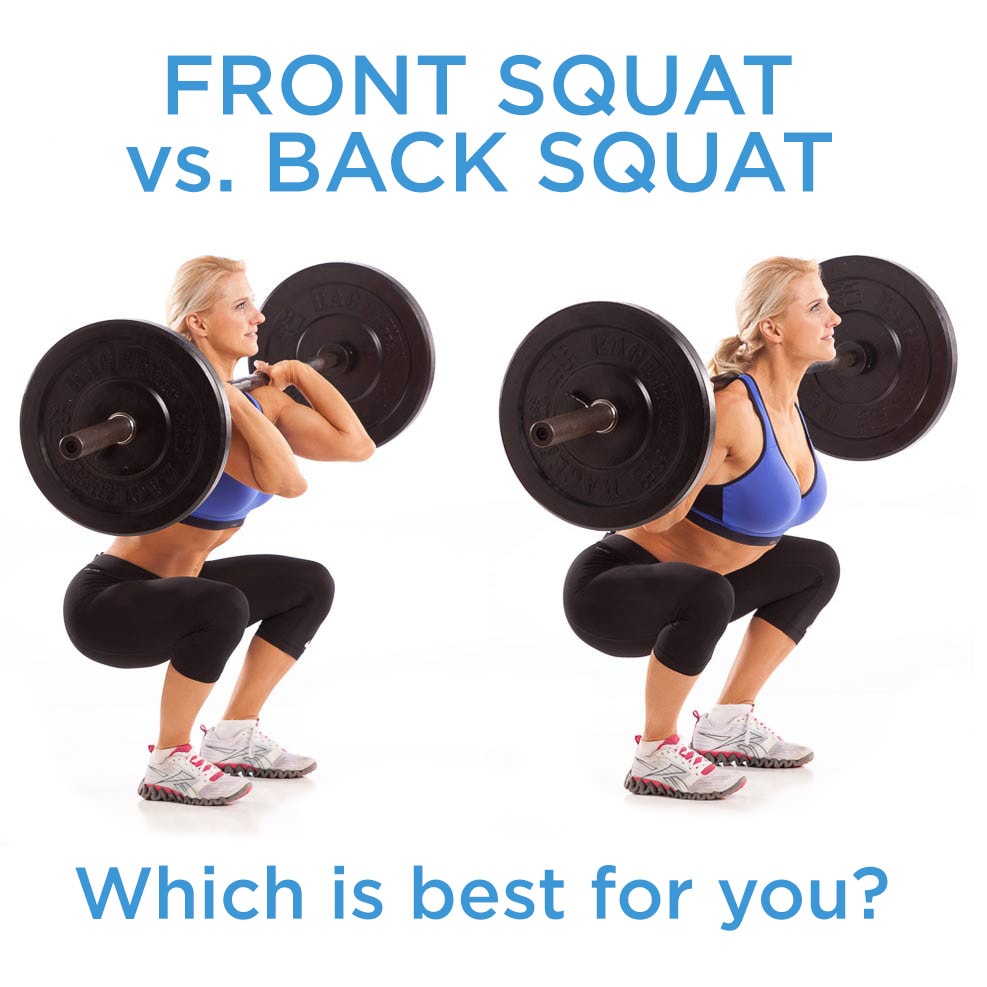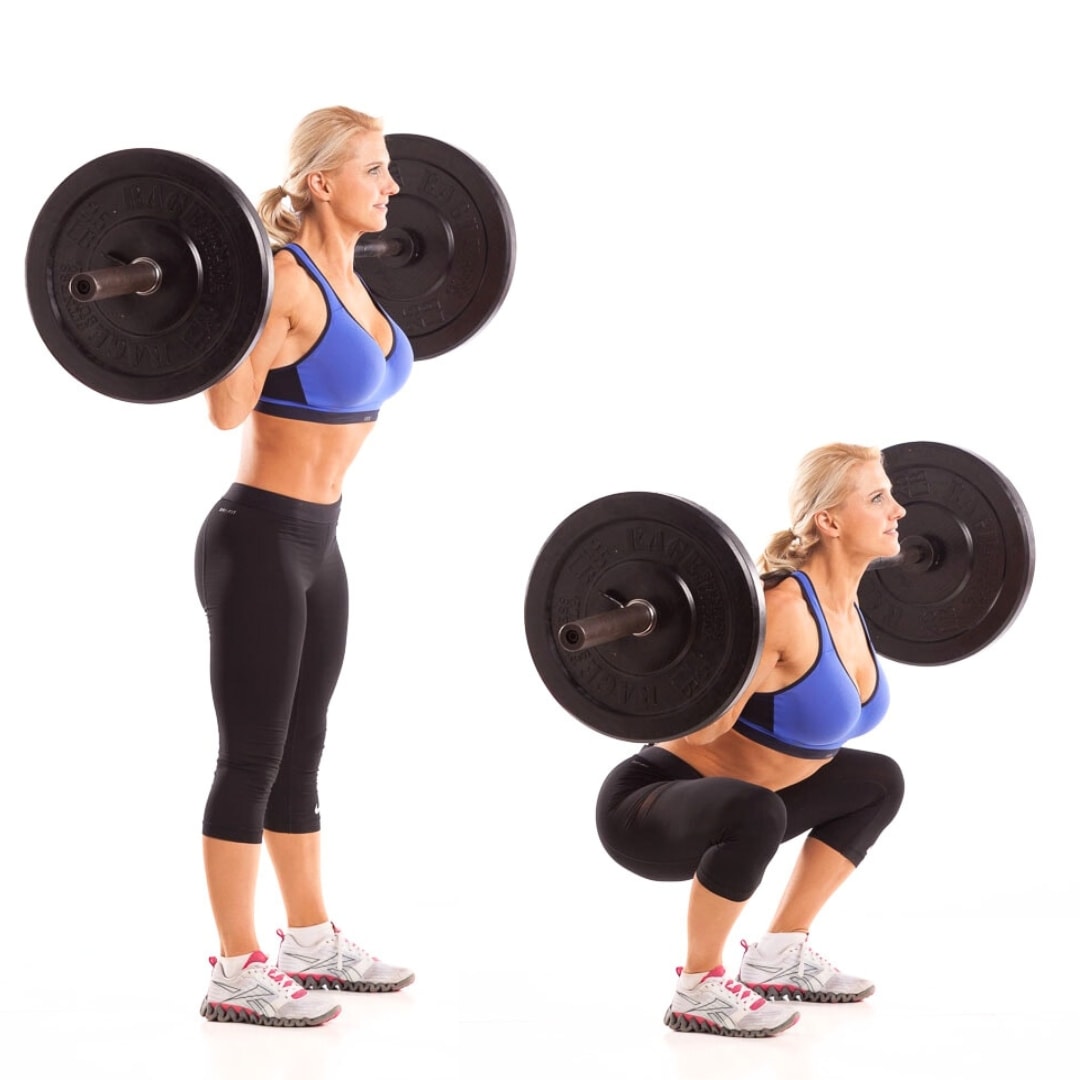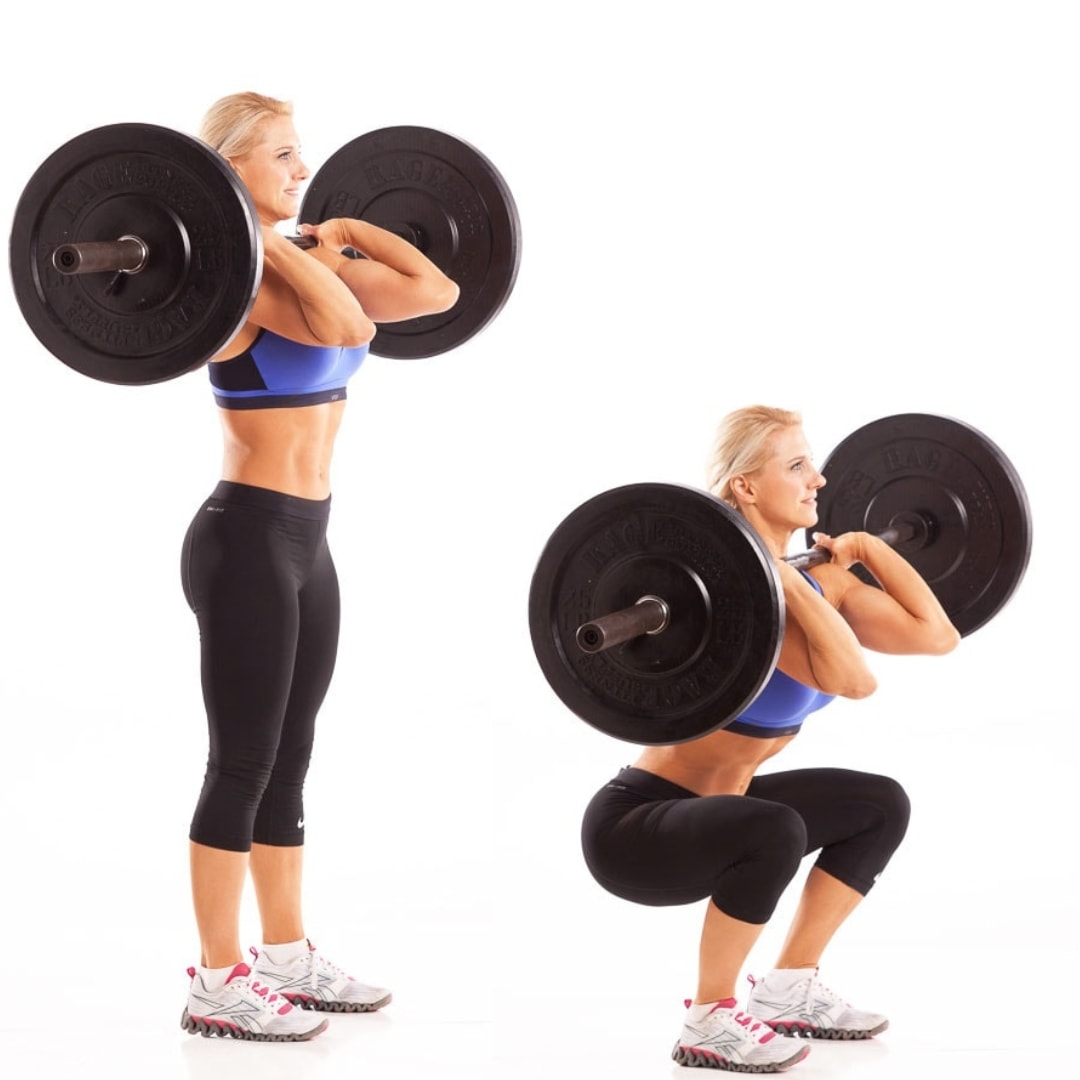Front Squat Versus Back Squat | Which Barbell Squat is Best for You?
As an Online Fitness Coach, I am a big proponent of including barbell squats into most women's leg workouts but I am often asked by clients which is better... front squat versus back squat. Really, both front squats and back squats are cornerstones of any effective lower body strength training schedule with each offering a soli workout that targets the quadriceps, hamstrings, and gluteal muscles.
While both exercises promise to enhance strength, improve jumping ability, increase running speed, and sculpt the legs and buttocks, choosing between the front squat versus back squat can be complex. As you make this decision I want to be sure you understand the nuanced risks and benefits of each, as well as their distinct advantages and disadvantages. Ok, let's dive in for a really targeted leg day workout!
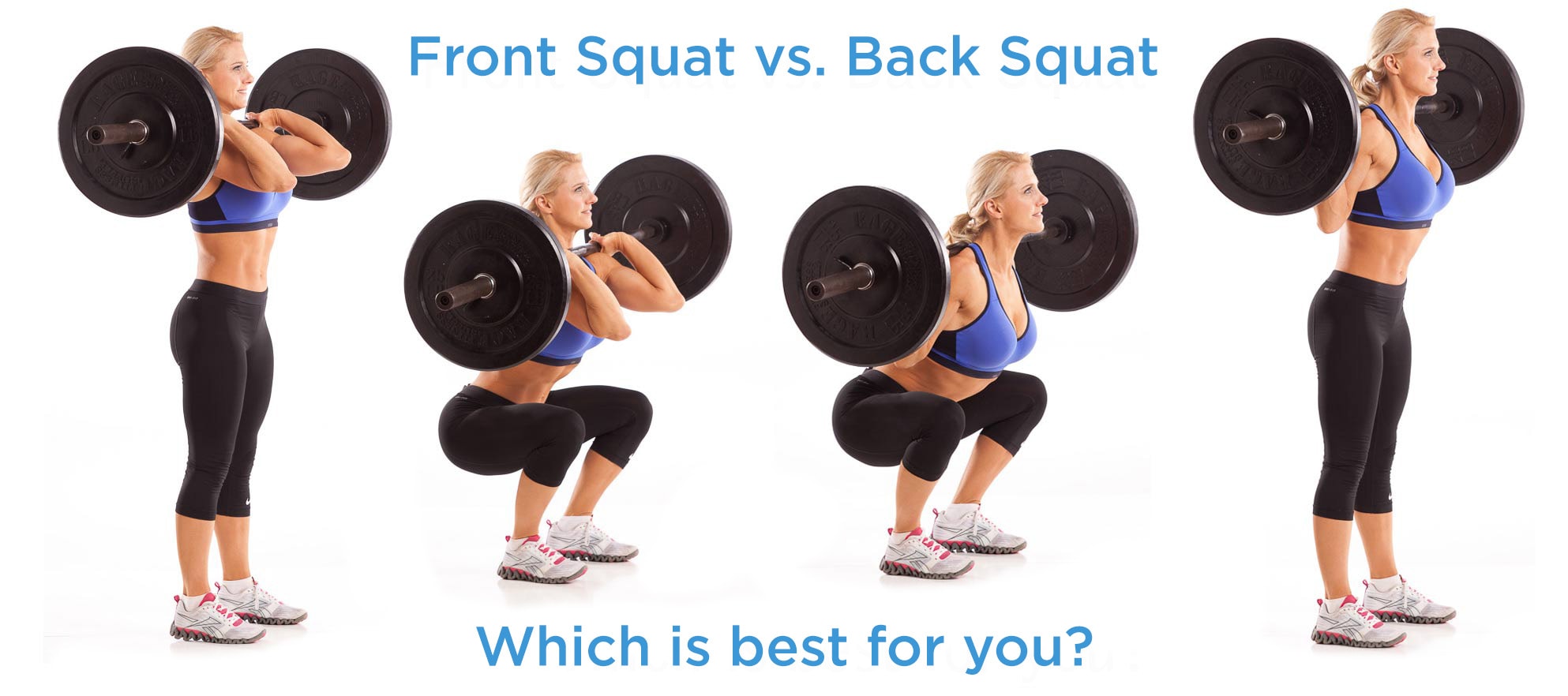
What is a Front Squat?
What is a Back Squat?
What are the primary differences between Front Squats and Back Squats?
The primary difference between a barbell front squat and a barbell back squat lies in the positioning of the barbell relative to the body, which significantly alters the muscles emphasized and the biomechanics of the movement.
In a front squat, the barbell is rested on the front shoulders, with the elbows pointed forward to keep the bar in place, shifting more of the focus onto the quadriceps and the upper back, while also requiring greater mobility and stability in the wrists, elbows, and shoulders. The front squat places the torso in a more upright position, reducing stress on the lower back and increasing the demand on core stability.
Conversely, in a back squat, the barbell is placed on the upper back (either in a high-bar or low-bar position), which allows for a heavier load to be lifted. This position emphasizes the glutes and hamstrings more significantly, along with the quadriceps, and can place more stress on the lower back. The back squat typically enables an individual to use more weight due to the barbell's position, which allows for better leverage and the engagement of the posterior chain muscles.
Front Squat versus Back Squat Difference: Muscle Focus
Front squats versus back squats, while both targeting the lower body, engage the muscles differently due to the distinct biomechanics involved in each lift. In the front squat, the barbell is positioned on the anterior shoulders, which necessitates maintaining an upright torso to keep the weight balanced. This posture shifts the center of gravity forward, increasing the demand on the quadriceps to stabilize and lift the weight. The upright position also reduces the engagement of the posterior chain, as the glutes and hamstrings are not as required to counterbalance the squat's motion compared to back squats. However, the glutes are still activated during the ascent, especially as the lifter drives upwards from the bottom of the squat. The front squat's emphasis on knee extension and reduced hip hinge movement mean the quadriceps are the primary focus, with the core and upper back also receiving significant work to stabilize the weight, offering a comprehensive anterior chain workout.
Conversely, barbell back squats allow the lifter to lean slightly forward, engaging the posterior chain more effectively. The barbell's placement on the upper back changes the lifter's center of gravity, allowing for a greater hip hinge motion which emphasizes the glutes and hamstrings. As the lifter descends into the squat, the hips move back more than in a front squat, requiring the glutes to work harder to stabilize and power the lift from the bottom position. The hamstrings play a critical role in controlling the descent and assisting in the lift, making back squats particularly effective for developing the posterior chain. The quadriceps are still significantly engaged, especially in maintaining knee stability and assisting in the ascent, but the biomechanics of the back squat ensure that the glutes and hamstrings are more prominently targeted. This engagement of the posterior chain not only supports the lifting of heavier weights but also contributes to a balanced development of the lower body muscles, highlighting the anatomical and physiological differences in muscle activation between the two squat variations.
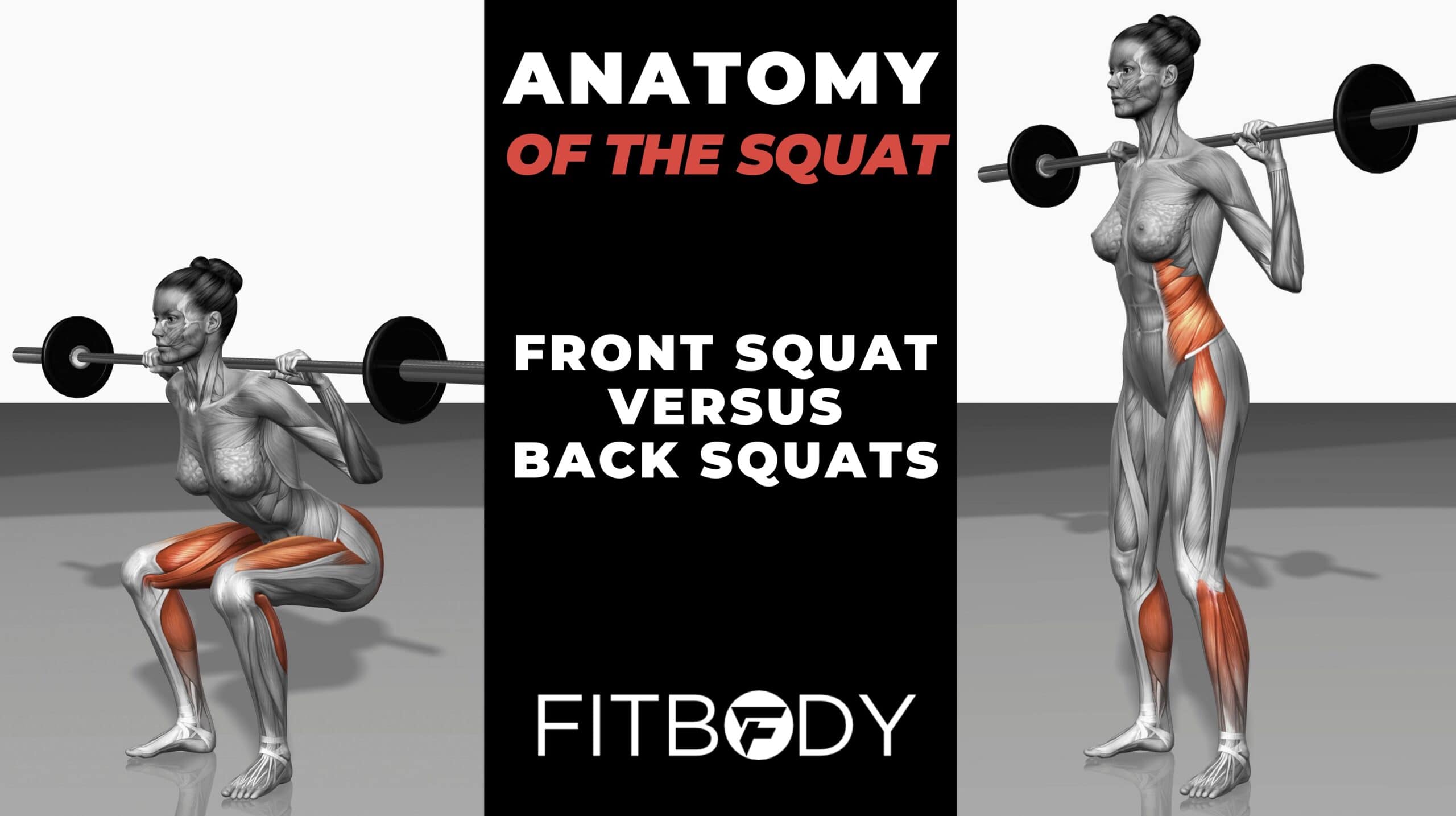
Front Squat versus Back Squat Difference: Mobility
Front Squats requires significantly more mobility than Back Squats. You need excellent thoracic spine or upper back mobility to keep your chest up, wrist flexibility and shoulder mobility to rack the bar, hip and groin mobility to front squat low with your knees in line with your toes, and ankle mobility to keep your lower back from rounding.
Very few women move well enough to execute a textbook Front Squat from the get-go. The positive here is that including barbell front squats into your leg workout forces you to improve your flexibility before going super heavy. Limited mobility does not mean that you should never perform a front squat though, just that you need to ease into the movement. I encourage my online fitness coaching clients to limit the weight they use until your flexibility improves. While front squats are traditionally done with a barbell, if the standard 45 pounds barbell is too heavy, a 15-30 pound barbell or even a pvc pipe can be used to increase flexibility and ensure proper form.
Back Squats require less mobility in the shoulders, hips and ankles, so you can jump into them sooner. That is good for getting stronger, but you still need to address your mobility issues.
Which is Better for Performance Front Squat or Back Squat?
Determining whether front squats versus back squats are more advantageous for athletic performance hinges on an athlete's specific demands and objectives. Each exercise provides substantial benefits, though their impact on athletic performance diverges based on their influence on strength, power, mobility, and injury prevention.
Front Squats are excellent for athletes seeking to improve posture, core stability, and lower body strength, particularly in the quadriceps. The upright stance required by front squats closely resembles the posture needed for various athletic actions, such as sprinting, jumping, and executing quick directional changes, thus facilitating the translation of strength gains into athletic performance. Moreover, front squats promote deeper squatting and necessitate significant core engagement, which may enhance mobility and mitigate injury risks by fortifying the muscles surrounding the knees and lower back. Therefore, front squats are especially advantageous for athletes engaged in sports that demand extensive lower body mobility and core strength, including soccer, basketball, and gymnastics.
Conversely, Back Squats enable athletes to lift more substantial weights, fostering notable strength increases in the posterior chain—comprising the glutes, hamstrings, and lower back—essential for explosive movements like sprinting, jumping, and lifting. The capacity to manage heavier loads also aids in boosting power, a pivotal aspect of numerous athletic activities. Additionally, the focus on the posterior chain by back squats may aid in injury prevention by addressing imbalances between the front and back leg muscles, often observed in athletes. Thus, back squats are exceptionally beneficial for sports that demand explosive power and strength, such as track and field, football, and weightlifting.
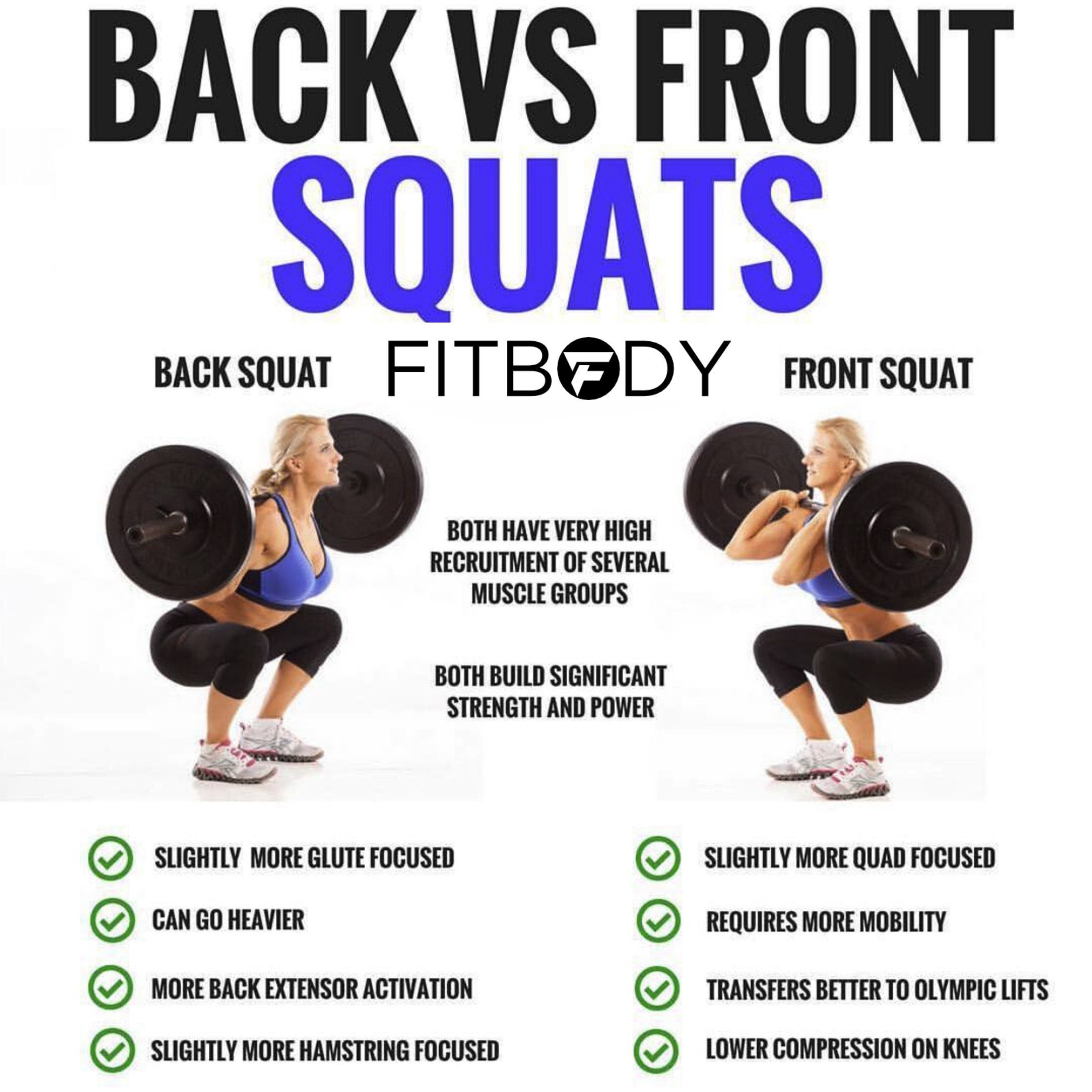
Let's Dive Into the Specifics for Back Squats Versus Front Squats!
Looking to enhance your overall athletic performance? Both front squats and back squats offer unique advantages and disadvantages when it comes to boosting athletic capabilities.
Hip Extension: Squats are pivotal for building strength in the hip-extending muscles, particularly the glutes and hamstrings, which are essential for powering sprints and jumps. Back squats allow for greater hip loading due to the ability to "sit back" more effectively, making them superior for developing hip power. Winner: Back Squats
Jump Power: Research indicates a strong correlation between increased squat strength and vertical jump height. This is because more powerful hip extension can launch you higher. Interestingly, studies have not demonstrated a significant difference in jump height improvements between front squats and back squats. Winner: Tie
Sprint Speed: Similarly, squatting heavier weights has been linked to improvements in sprint speed, as greater force applied to the ground translates to faster movement. Both front and back squats are effective in this regard. Winner: Tie
Overall Strength: Back squats generally allow for lifting heavier weights than front squats because the weight is supported across the upper back, facilitating the use of larger loads. This is evident in the higher world record for back squats, which suggests a greater potential for strength gains with this variation. Winner: Back Squats
Shoulder Health: Back squats can sometimes exacerbate shoulder discomfort due to the bar placement. Front squats, by positioning the bar at the front shoulders and requiring an upright elbow position, can mitigate this issue, making them a safer option for athletes with shoulder concerns. Winner: Front Squats
Core Strength: Front squats, by positioning the barbell at the front of the shoulders and necessitating an upright torso to maintain balance, inherently require significant engagement of the anterior core muscles to prevent collapsing forward. This constant tension throughout the exercise strengthens the core, particularly the rectus abdominis and the obliques, as well as the muscles of the upper back. Back squats, while still engaging the core to maintain posture and stability, place a greater emphasis on the posterior chain. The need for increased anterior core stabilization in front squats makes them a more effective option for specifically targeting and enhancing core strength. Winner: Front Squats
Knee Health: Squats play a crucial role in knee injury prevention by strengthening the muscles around the knee, particularly the vastus medialis oblique. Front squats slightly edge out in this area by emphasizing this muscle group more and teaching proper knee tracking to prevent valgus collapse. However, the deeper knee flexion required in front squats might aggravate existing knee issues for some athletes, while back squats, especially with modifications like box squats or a wider stance, can reduce knee strain by shifting more load to the hips. Winner: Tie
Cleans and Snatches: The carryover to Olympic lifts, such as the clean and snatch, is a notable difference between the two squats. Although back squats allow lifting heavier loads, front squats better replicate the motion of rising from the bottom position of a clean or snatch, making them more beneficial for improving performance in these explosive lifts. Winner: Front Squats
This analysis underscores the importance of choosing the right squat variation based on specific athletic needs and goals. Both front and back squats have their place in a well-rounded training regimen, offering complementary benefits that can lead to improved athletic performance.
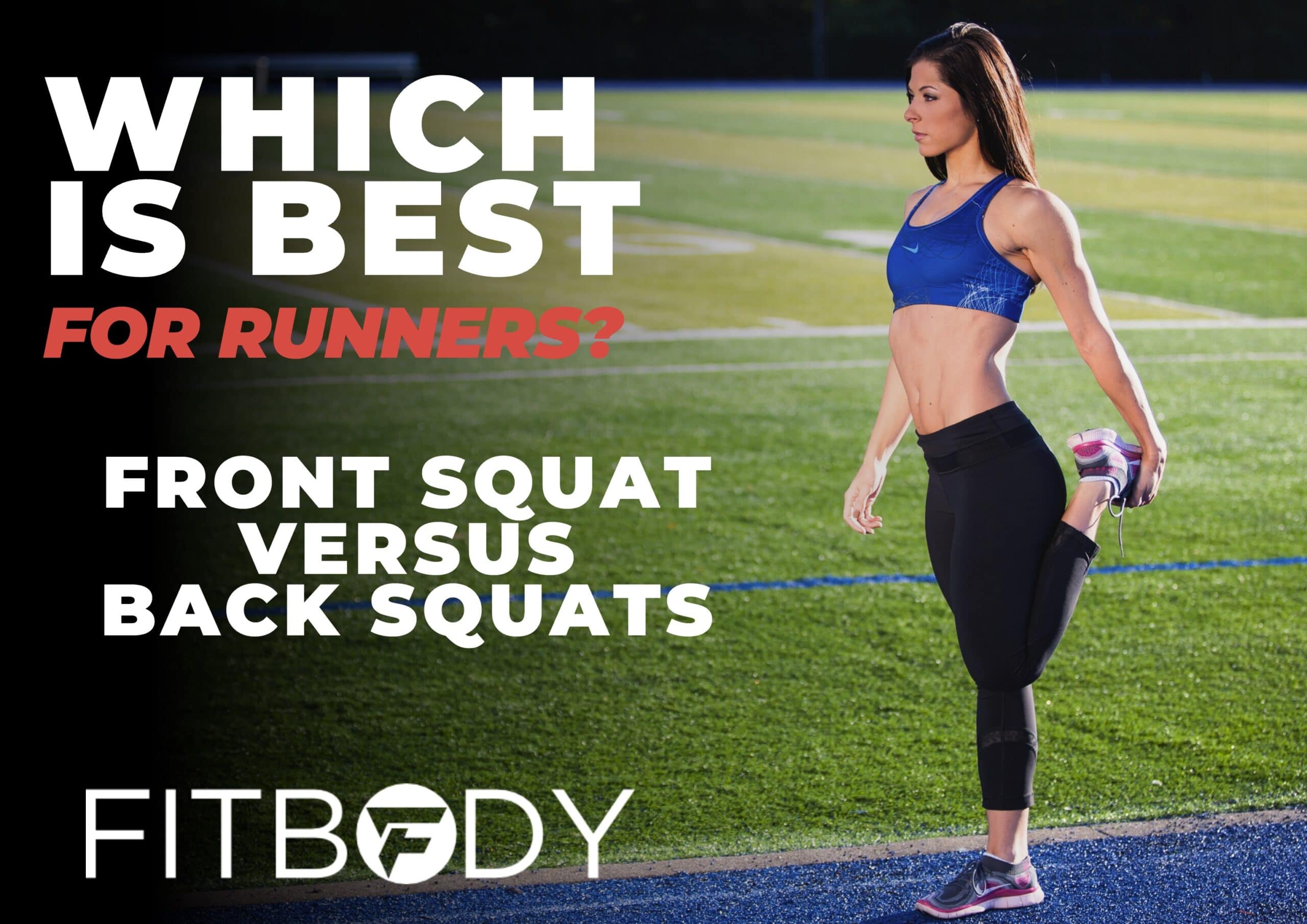
Should Runners do Front Squats or Back Squats?
For sports like running that demand strong legs, endurance, and a balanced lower body strength without overly bulking up, the squat variation chosen can play a pivotal role in enhancing performance and preventing injuries. Running, in particular, benefits from exercises that improve the strength and stability of the lower body, enhance core strength, and ensure mobility in the hips and ankles.
Running Performance: Back squats are renowned for their ability to increase overall lower body strength by engaging the glutes, hamstrings, and quadriceps extensively. This comprehensive engagement is crucial for developing the power needed for sprinting and improving running economy. However, the potential for heavier weights with back squats might not always translate to the kind of endurance and lean muscle development preferred for distance running. Front squats, on the other hand, require and build substantial core strength, which is vital for maintaining posture and efficiency in running. They also promote lower body strength with a greater emphasis on the quadriceps and an upright torso position, which mirrors the posture needed in running, thereby potentially reducing the risk of running-related injuries by encouraging a stronger, more aligned posture.
Given these considerations, front squats might have a slight edge for runners, particularly for those focused on distance running, due to their emphasis on core stability, upright posture, and quadriceps strength. These aspects are essential for maintaining form and efficiency over long distances, thus enhancing endurance and reducing injury risk. For sprinters, the decision might lean more towards back squats for their unparalleled ability to build powerful hips and legs. However, the best approach might involve incorporating both squat variations into a training regimen to achieve a well-rounded strength foundation.
Winner: Front Squats for distance runners due to their focus on core strength, posture, and quadriceps, which align closely with the demands of endurance running.
Should I do Front Squats or Back Squats for Deadlift?
Choosing between front squats and back squats as a supplementary exercise to improve your deadlift largely depends on your specific weaknesses or areas you wish to strengthen. Both exercises can complement your deadlift training, but they do so in different ways.
Front Squats are excellent for building core strength and stability because the front rack position requires you to brace your core tightly to keep the torso upright. This increased core demand can translate to better core engagement and stability during deadlifts, which is crucial for maintaining form and preventing injuries. Additionally, front squats emphasize the quadriceps more than back squats, which could be beneficial if your deadlift is limited by leg strength, particularly at the start of the lift.
Back Squats, on the other hand, have a greater emphasis on the posterior chain, including the glutes, hamstrings, and lower back, which are all heavily involved in the deadlift. Strengthening these muscles can improve your ability to drive through the floor and powerfully extend the hips, crucial elements of a strong deadlift. The back squat's similarity in movement pattern to the deadlift, especially the hip hinge aspect in the low-bar variation, can also offer more direct performance benefits.
If your deadlift is limited by a lack of leg strength or if you need to improve your starting position strength and core stability, front squats might be the more beneficial choice. If you're looking to increase your posterior chain strength, particularly for the lockout phase of the deadlift, or if you wish to enhance overall power and muscle mass in the muscles most used during deadlifts, back squats could be more advantageous.
Incorporating both variations into your training program, possibly focusing more on one based on your current needs, can provide a comprehensive approach to improving your deadlift and overall strength.
FITBODY MAGAZINE FOR WOMEN
Workouts | Nutrition | Transformation
The Latest in Fitness & Nutrition for Real Women!
Scientific Research
The following scientific research has been references in this article:
- Myer, Gregory D., et al. “The Back Squat.” Strength and Conditioning Journal, vol. 36, no. 6, Dec. 2014, pp. 4–27, www.ncbi.nlm.nih.gov/pmc/articles/PMC4262933/, https://doi.org/10.1519/ssc.0000000000000103.
- Witmer, Chad A., et al. “The Acute Effects of Back Squats on Vertical Jump Performance in Men and Women.” Journal of Sports Science & Medicine, vol. 9, no. 2, 1 June 2010, pp. 206–213, www.ncbi.nlm.nih.gov/pmc/articles/PMC3761744/.
- Peeni, Manu. The Effects of the Front Squat and Back Squat on Vertical Jump and Lower Body Power Index of Division 1 Male Volleyball Players. https://scholarsarchive.byu.edu/cgi/viewcontent.cgi?article=1929&context=etd
- Hartmann, Hagen, et al. “Influence of Squatting Depth on Jumping Performance.” Journal of Strength and Conditioning Research, vol. 26, no. 12, Dec. 2012, pp. 3243–3261, https://doi.org/10.1519/jsc.0b013e31824ede62.

